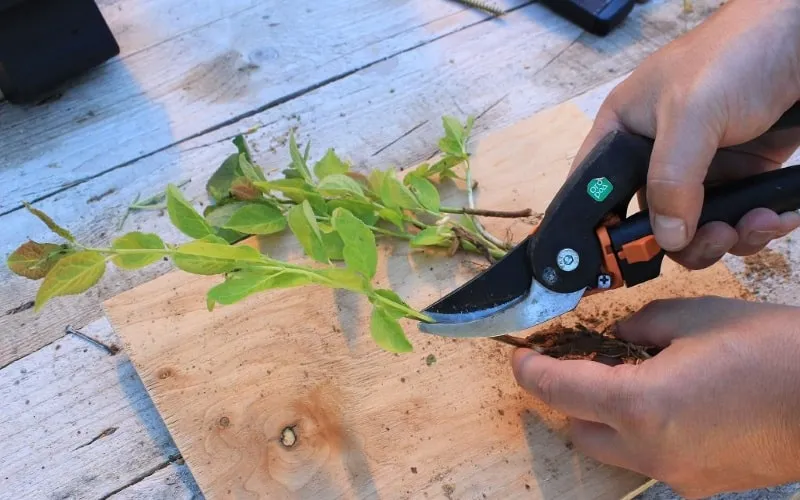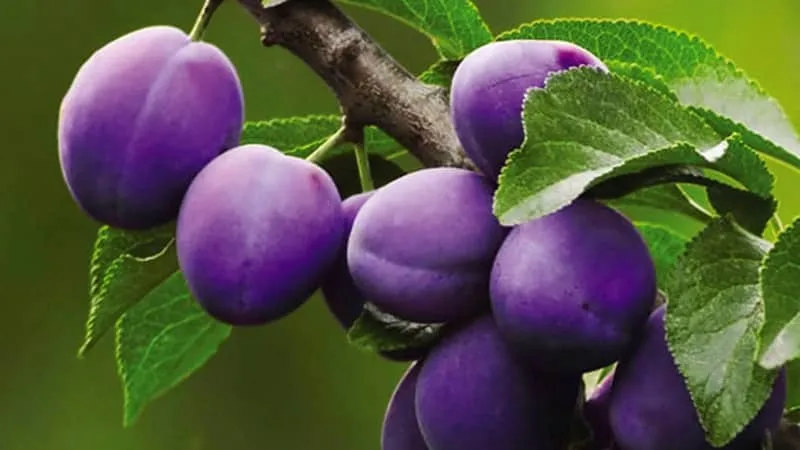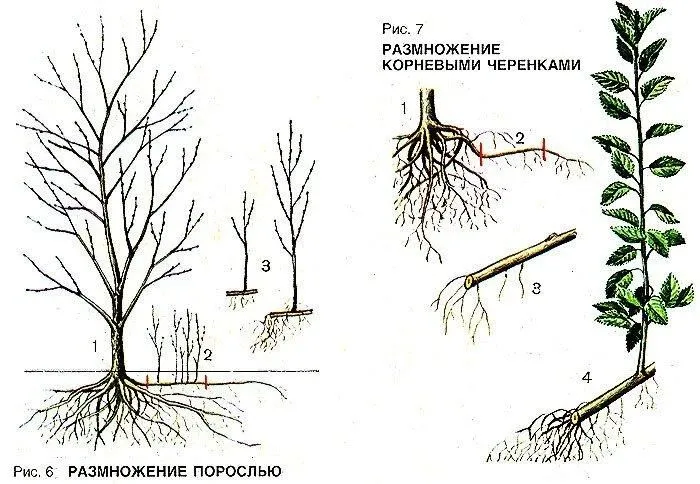Like most fruit crops, plums can be propagated through artificial and natural methods. Natural vegetative propagation includes growing from seeds, root suckers, or layering. Among artificial methods (grafting, cuttings), cuttings are the most common. In this article, we will explain how to propagate plums using cuttings.
Table of contents
Can You Propagate Plums from Cuttings in Summer?
The most popular method of propagating plums is through hardwood cuttings, which are prepared in autumn.
In recent years, so-called greenwood cuttings—previously used mainly in commercial fruit cultivation—have gained popularity among amateur gardeners. This method uses summer cuttings that are still soft and not yet fully lignified.

Advantages and Disadvantages of Summer Cuttings
Advantages:
- Faster method of growing stone fruit crops;
- High rooting success rate;
- Preservation of varietal qualities;
- No need for winter storage of cuttings.
Disadvantages:
- Not suitable for all varieties;
- Requires special conditions for rooting;
- May lead to increased costs due to the above.
Optimal Timing
While hardwood stem cuttings are prepared during the plant's dormant period, green cuttings are taken during active growth, when shoots are rapidly developing.
Best Days for Cutting
Like other fruit trees, plums experience vigorous vegetative growth in early summer.
In Central Europe, the period for collecting green cuttings lasts from early June to mid-July. A visual indicator is when the growing shoots begin to redden at the base.
To retain moisture in the shoots, cuttings should be taken on cloudy days or early in the morning before the heat sets in.
Suitable Plum Varieties

Not all plum varieties propagate well from cuttings. The best results are achieved with varieties that naturally produce abundant root suckers.
Plum varieties well-suited for cuttings:
- Victoria;
- Opal;
- Stanley;
- Marjorie’s Seedling;
- Czar;
- Early Laxton;
- Blue Tit;
- President.
Selecting and Preparing Cuttings
For cuttings or layering, choose well-developed young trees with strong root systems and healthy shoots.
On a suitable day, cut stem sections from this year's healthy shoots using a sharp knife.
How to take cuttings:
- Each cutting—green or hardwood—should have 2–4 live leaves/buds, depending on internode length. Typically, cuttings are 10–15 cm long.
- Stems should be pencil-thick to slow drying.
- Make the lower cut at a 45° angle just below a bud to maximize nutrient absorption during rooting.
- The upper cut, above a leaf, should be straight to minimize moisture loss. For green cuttings, remove lower leaves, leaving only the top one.
For air layering, prepare cuttings from last year's shoots and separate them only after roots develop.
Steps for preparing air layers:
- In spring, make a ring cut in the bark 15–20 cm from the shoot tip.
- Wrap the exposed ring with moist sphagnum moss and cover it with plastic film.
Rooting Methods
Root formation requires specific temperature, humidity, and chemical conditions. A greenhouse with plastic sheeting can provide the necessary warmth and moisture.
For spring planting of hardwood cuttings, pre-warm the soil.
Note. Commercial propagation systems, including automated misting setups, can enhance rooting success.
A simple home method is planting cuttings in pots or boxes (covering is still needed). Placing a water container nearby helps maintain humidity.
For air layering, the plastic-wrapped moss creates a humid microenvironment. Keep the moss moist until roots form. In autumn, carefully detach and transplant the rooted layer.
Can You Grow Plums from Suckers, and Will They Fruit?

Another simple vegetative method is using root suckers—shoots emerging from dormant buds on roots.
Suckers are often used for plums, as many varieties produce them abundantly.
Here, existing ground shoots serve as planting material—just separate them properly from the parent tree.
The key is selecting promising suckers: those near the trunk usually have weaker roots.
In late summer or autumn, sever the connecting root and transplant the young tree. With proper care, fruiting begins in 1–2 years.
Important! This method works only for own-rooted trees, not grafted ones.
Planting Prepared Cuttings
Plant green cuttings immediately in a greenhouse.
Hardwood cuttings stored over winter need preparation: trim slightly and soak in cold water for 3 days before spring planting.
Tip: Refreshing cuts and soaking for a few hours benefits fresh cuttings before planting.
Planting details:
- Ideal soil mix: neutral peat and river sand (1:1), topped with 1.5–2 cm sand. Fertilize with a superphosphate solution (1 tsp per 10 L water).
- Pre-warm the greenhouse to +25–30°C and water the soil thoroughly.
- Remove lower leaves from green cuttings.
- For better rooting, treat the base with a growth stimulator—such as Clonex, Rhizopon, or Rootgrow.
- Plant cuttings 3 cm deep, 5 cm apart, at a 45° angle.
- Cover with a greenhouse film or fabric.
Propagation Specifics

All discussed methods are effective; choose based on variety and growing region.
By Plum Variety
Cuttings require more effort than suckers or layering. Preparing cuttings, building greenhouses, and caring for seedlings demand time and skill.
Greenwood cuttings speed up sapling production but suit only certain varieties (rooting rates: 20–70%).
Conversely, finding ideal mother trees with strong suckers isn’t always possible.
By Region
Timing depends on local climate, growth cycles, and regional varieties.
In northern Europe, where summers are short, early spring sucker propagation ensures maturity before winter.
Aftercare
Maintain greenhouse conditions:
- Water and mist 2–3 times daily;
- Ventilate daily to prevent condensation;
- Apply mineral fertilizer once;
- Prevent fungal/bacterial diseases (risk increases in high humidity).
In autumn, remove covers and insulate with mulch (peat, dry leaves) or geotextile. Transplant saplings next spring.
Note. Roots typically appear in 15–30 days, depending on variety.
Tips from Experienced Gardeners
Spring rooting of hardwood cuttings is most effective, giving plants time to adapt before winter.
Avoid weak shoots—focus on healthy growth or postpone until next year after rejuvenating pruning.
Conclusion
Summer plum propagation from cuttings is manageable with proper technique. Success depends on variety selection, climate, soil type, and attentive care at each growth stage.







